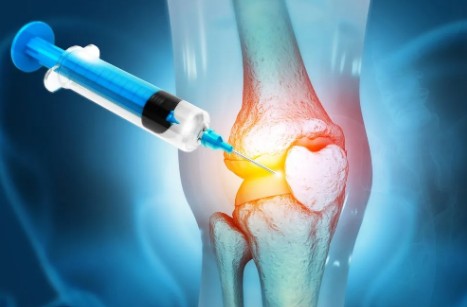Joint injections, such as steroid or hyaluronic acid treatments, are increasingly common options for managing pain and inflammation. These procedures can provide relief for conditions like arthritis, bursitis, or tendonitis. Dr. Jason Pirozzolo, a renowned physician specializing in musculoskeletal health, explains what patients can expect before, during, and after a joint injection. “Understanding the process helps alleviate anxiety and ensures better outcomes,” says Dr. Jason Pirozzolo.
Preparing for Joint Injections
Most importantly, preparation is key to a smooth procedure. Before receiving a joint injection, your doctor will evaluate your medical history and perform a physical exam. Imaging studies, such as X-rays or ultrasounds, may also be used to pinpoint the affected area. Dr. Jason Pirozzolo advises patients to inform their physician about any medications they’re taking, as certain drugs, like blood thinners, may need to be paused. “Clear communication with your healthcare provider ensures a safe and effective experience,” he emphasizes.
During the procedure, the affected joint is thoroughly cleaned to minimize the risk of infection. A local anesthetic is often used to numb the area, ensuring minimal discomfort. The injection itself is guided by imaging tools, such as ultrasound, for precise placement. Dr. Pirozzolo explains, “This level of accuracy maximizes the benefits of the treatment while minimizing potential side effects.” Patients may feel mild pressure or a slight pinch, but the process is typically quick and well-tolerated.
After the injection, patients are advised to rest the treated joint for at least 24-48 hours. Avoiding strenuous activities helps the medication settle into the joint and begin its work. Dr. Pirozzolo recommends applying ice to the area if there’s any swelling or discomfort. “Recovery is just as important as the injection itself. Follow your doctor’s instructions closely for optimal results,” he advises.
Types of Injections
Steroid injections are often used to reduce inflammation and provide rapid pain relief. These effects can last for weeks or even months, depending on the individual. However, repeated steroid use should be carefully managed to avoid potential side effects, such as cartilage damage. Dr. Jason Pirozzolo states, “Steroid injections are an effective tool, but they should be part of a broader treatment plan.”
Hyaluronic acid injections, on the other hand, are typically used to improve joint lubrication, particularly in cases of osteoarthritis. This treatment enhances mobility and reduces stiffness. Results may take a few weeks to become apparent but often last longer than steroid injections. “Hyaluronic acid offers a more natural way to support joint health,” Dr. Pirozzolo explains.
Lifestyle Changes and Side Effects
Because lifestyle plays a critical role in joint health, combining injections with other interventions yields the best outcomes. Weight management, low-impact exercises, and physical therapy can all complement the benefits of joint injections. Dr. Jason Pirozzolo highlights, “Taking a comprehensive approach ensures long-term success and minimizes the need for additional procedures.”
Patients should be aware of potential side effects, such as temporary swelling or mild pain at the injection site. In rare cases, there may be an increased risk of infection or allergic reactions. Dr. Pirozzolo reassures, “These risks are minimal when the procedure is performed by an experienced provider.” Promptly reporting any unusual symptoms to your doctor ensures swift management of any complications.
Maintaining Joint Health
Maintaining overall joint health after an injection is crucial. Stretching routines, ergonomic adjustments, and anti-inflammatory diets can all support recovery. Foods rich in omega-3 fatty acids, such as salmon and flaxseed, help reduce inflammation, while proper hydration maintains joint lubrication. Dr. Pirozzolo recommends regular follow-ups to monitor progress and adjust the treatment plan as needed. “Collaboration between patient and provider is the key to lasting relief,” he says.
By understanding what to expect before, during, and after joint injections, patients can approach the procedure with confidence. As Dr. Pirozzolo puts it, “Knowledge empowers patients to take control of their joint health.”
For expert advice on sports and orthopedic injuries, recovery strategies, and cutting-edge treatments, follow Dr. Jason Pirozzolo for insights into the latest developments in sports medicine and orthopedic medicine. You may also visit a Key West orthopedic clinic for more information.

